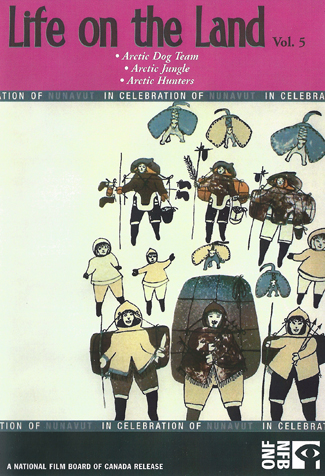From the Editor... Words Worth Repeating
Qillarsuaq
The Endurance Dogs
The Concept of an Aboriginal Dog Breed
Inuit Tradition in 75 Tons of Sand!
The Canadian Animal Assistance Team’s 2013 Northern Canada Animal Health Care Project
Far Fur Country Project Update
Movie Review: Arctic Dog Team, Arctic Jungle, Arctic Hunter
IMHO... Well, That's The Way We Do It!
Navigating This Site
Index of articles by subject
Index of back issues by volume number
Search The Fan Hitch
Articles to download and print
Ordering Ken MacRury's Thesis
Our comprehensive list of resources
Defining the Inuit Dog
Talk to The Fan Hitch
The Fan Hitch home page
Editor: Sue Hamilton
Webmaster: Mark Hamilton
The Fan Hitch, Journal
of the Inuit Sled Dog, is published four
times a year. It is available at no cost
online at: https://thefanhitch.org.
The Fan Hitch welcomes your letters, stories, comments and suggestions. The editorial staff reserves the right to edit submissions used for publication.
Contents of The Fan Hitch are protected by international copyright laws. No photo, drawing or text may be reproduced in any form without written consent. Webmasters please note: written consent is necessary before linking this site to yours! Please forward requests to Sue Hamilton, 55 Town Line Rd., Harwinton, Connecticut 06791, USA or mail@thefanhitch.org.
This site is dedicated to the Inuit Dog as well as related Inuit culture and traditions. It is also home to The Fan Hitch, Journal of the Inuit Sled Dog.
The Fan Hitch welcomes your letters, stories, comments and suggestions. The editorial staff reserves the right to edit submissions used for publication.
Contents of The Fan Hitch are protected by international copyright laws. No photo, drawing or text may be reproduced in any form without written consent. Webmasters please note: written consent is necessary before linking this site to yours! Please forward requests to Sue Hamilton, 55 Town Line Rd., Harwinton, Connecticut 06791, USA or mail@thefanhitch.org.
This site is dedicated to the Inuit Dog as well as related Inuit culture and traditions. It is also home to The Fan Hitch, Journal of the Inuit Sled Dog.

In Celebration of Nunavut:
Life on the Land
Volume 5
Arctic Dog Team
Arctic Jungle
Arctic Hunter
reviewed by Sue Hamilton
The National Film Board of Canada (NFB) offers a collection of three documentaries that recorded Inuit living their traditional hunting-trapping existence. Arctic Dog Team (10:11; 1949; in color), Arctic Jungle (10:21; 1948; in color) and Arctic Hunter (16:11; 1944; in black and white) include scenes of the non-aboriginal presence of missionaries, Hudson’s Bay Company traders, the Royal Canadian Mounted Police and an annual very early version of today’s sealift which brought mail, building and other supplies, including tobacco. (A ship’s officer is seen lighting a cigar for an Inuk woman.) In these three films, the non-Inuit influence is felt even greater by the presence of the totally inappropriate music accompanying Arctic Dog Team and Arctic Jungle and even worse, the narration that was entirely written from a white perspective. This is especially puzzling in Arctic Dog Team as the narrator is Doug Wilkinson, who was known as “Qimmiq” by his Inuit friends with whom he had formed close bonds. Although all three documentaries reasonably describe Inuit life and activities, Arctic Jungle did the best job of minimizing the non-aboriginal adjectives. It was also accompanied entirely by traditional drumming and ayaya singing.
The location for the films was largely the eastern arctic along the northwest coast of Hudson’s Bay. Collectively scenes include summer time hunting of seals, walruses, beluga whales and polar bear by boat and qajaq (kayak) using rifles, harpoons and seal skin floats; fishing with the use of kakivak (fish spear); the use of an ulu for butchering, preparing fish for drying, skinning hides, eating; sewing skin clothing and qajaq covering. And of course there were scenes of the dogs: recently born pups, children “learning” how to manage a kid-sized qamutiq while “training” older puppies how to pull, dozens of loose dogs descending on a spot where scraps of food have been left for them, several dogs taking down a rack of fish drying, the preparation of mud/ice covered runners, loading a qamutiq for distance travel, lots of scenes of dog team travel with one showing a team so eager to go that a multi-dog fight ensues. Doug Wilkinson describes the traditional need, use and behavior of the dogs.
You may not be able to find this particular trio as a collection by searching the NFB website. So to arrange purchase of this multi-regional formatted DVD-R, please email the NFB. For US and Canadian buyers, the cost is $19.95 (in either country’s currency). NFB may not have the rights to sell it internationally. So outside of North America may require an extra step to find a Canadian or US connection to buy it for you. As a resource documenting what life on the land was like and how Inuit were perceived through the eyes of non-aboriginals, Arctic Dog Team, Arctic Jungle and Arctic Hunter are worth the effort to include in your polar video collection.